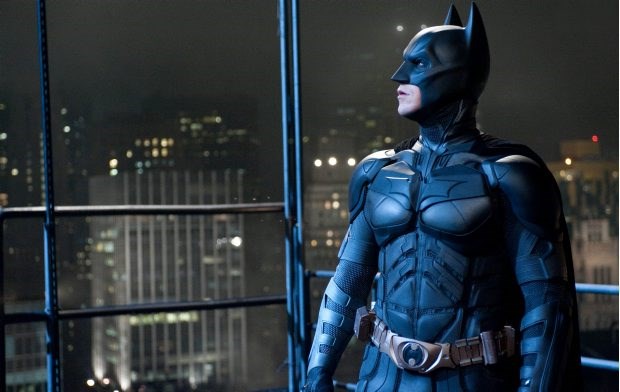Another summer of the blockbuster has begun. It's a term that screams bigness in a multitude of ways.
Think big picture, big dollars, big comfy seats, big buckets of popcorn and bladder-busting beverages, and really big sound.
Indeed, while the size of our mobile gadgets has shrunk to the point that you can now watch Laurence of Arabia on a stamp-sized screen, the multiplex mantra remains "bigger is better."
We've become so conditioned to expect a super-sized movie experience with enhancements from 3-D to Imax and UltraAVX that, for many of us, seeing Spider-Man, The Dark Knight and Jeremy Renner, heir apparent to the Bourne franchise, in action under less than gigantic conditions just won't do.
While such larger-than-life movie experiences can be exhilarating, escalating aural intensity is pushing the limits of such sensory assaults.
Indeed, "It's too loud!" seems to be overshadowing complaints about texting teens and loudmouths.
Especially in a market like ours, with such a strong 50-plus demographic, complaints about excessive noise levels - especially during those loud pre-feature trailers and commercials - are not uncommon.
What many don't realize is that a movie's "big sound" isn't set by exhibitors, and that because of the complexities of state-of-the-art audio systems, simply lowering the volume isn't necessarily the ideal solution.
While it might minimize the ear-splitting impact of explosions, screeching tires or loud gunfire, it can also render low-key dialogue scenes barely audible.
"We have to explain we only have one volume control," says Brian Jupp, manager of Langford's Caprice Theatre.
"You can only turn some movies down so much. We're not like a home theatre. There are lots of peaks and valleys to theatre sound."
While exhibitors aim for a crowd-pleasing mid-range playback of audio meticulously mixed in the studio, some films - such as Michael Jackson's This Is It - arrive with instructions to be played at higher volumes for maximum impact.
Excessive noise levels can be more than just a nuisance. Prolonged exposure to the thunderous sounds of galloping hooves, blood-curdling screams, loud music, shootouts, racing cars and massive explosions can affect your hearing.
It often isn't until you've finished watching a movie at a high-decibel level, with your ears ringing, that you realize how deafening it was, says audiologist MJ DeSousa.
"It's cumulative," says DeSousa, director of professional practice for Connect Hearing, the national network of hearing health clinics.
"When you think of noise damage, you have to look at it in terms of your daily dose of noise."
Factors such as specific noise levels and duration of exposure should be taken into account, she said.
"A movie theatre in and of itself might not be a big risk if the rest of your day is fairly quiet and you're only there for two hours," she said.
"But it could be worse if, say, you live in a big urban centre. It all adds up."
Depending on the film and sound distribution in the theatre, noise levels average between 80 to 100 decibels. Some have been recorded as high as 135, however - well above the "safe" level of 85 decibels.
In a 2010 study conducted by the Ear, Nose and Throat Journal, Transformers topped out as the worst offender in terms of highest decibel levels recorded, with 133.9.
Others included License to Wed (129.1) and The Simpsons Movie (128.6).
Connect Hearing's list of top five "earplug-worthy" movies includes Close Encounters of the Third Kind, Lord of the Rings: Return of the King, Terminator, Star Wars Episode 2: Attack of the Clones and Harry Potter and the Deathly Hallows Part 2.
Jupp has added one of his new releases to that list.
"I vote for Battleship," he said, laughing. "I can hear it in my office."
One thing that concerns DeSousa is the increasing levels of hearing-related problems in younger Canadians.
"Kids are always plugged into something nowadays," said DeSousa, 44. "Their daily dose is higher than what I was plugged into at that age.
Hearing loss becomes more prevalent with each passing decade."
As for why those commercials in theatres and TV seem so loud, "it's marketers trying to wake us up," she says.
The good news is Industry Canada's Communications Research Centre recently helped develop a system to measure loudness in TV commercials.
The loudness meter will help the CRTC force TV networks to control the volume of commercials they air in the near future.
Pierre Gauthier, manager of downtown's Cineplex Odeon, has responded to audience feedback by lowering the volume during senior matinées and at Tinseltots screenings, one of the local "moms and babies" programs with lower sound levels.
"We try not to have movies playing too loud in this location," he said.
"We'll turn it down for anybody if we can."
Jeremy Charles, general manager of Empire Theatres locations, said they also aim for a consistent sound level.
"It depends on the film," he said. "Seniors generally prefer the volume to be lower, and we do try to turn it down."
Lindsay Pomper, manager of Sidney's Star Cinema, says staff do routine sound checks.
"We do get complaints when films are too loud," she said. "We manage it film by film."
Local Empire and Cineplex theatres are also equipped with CaptiView systems for hearing-impaired guests.
A small high-contrast screen on a bendable support arm that fits into a seat's cup holder features closed captions.
While some industry observers have suggested a "noise ratings system" similar to film classification, that isn't likely to happen anytime soon.
So if movie noise persistently bothers you, consider speaking to a manager or reflect on hearing-impaired rocker Ozzy Osbourne's self-talk after years of loud music exposure: "Should have worn ear plugs, I guess."
mreid@timescolonist.com



